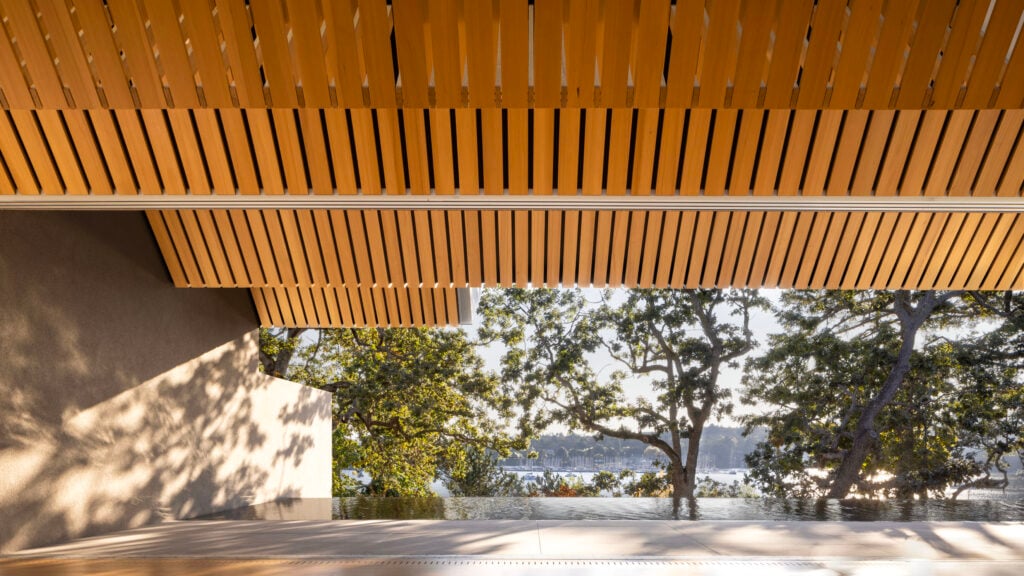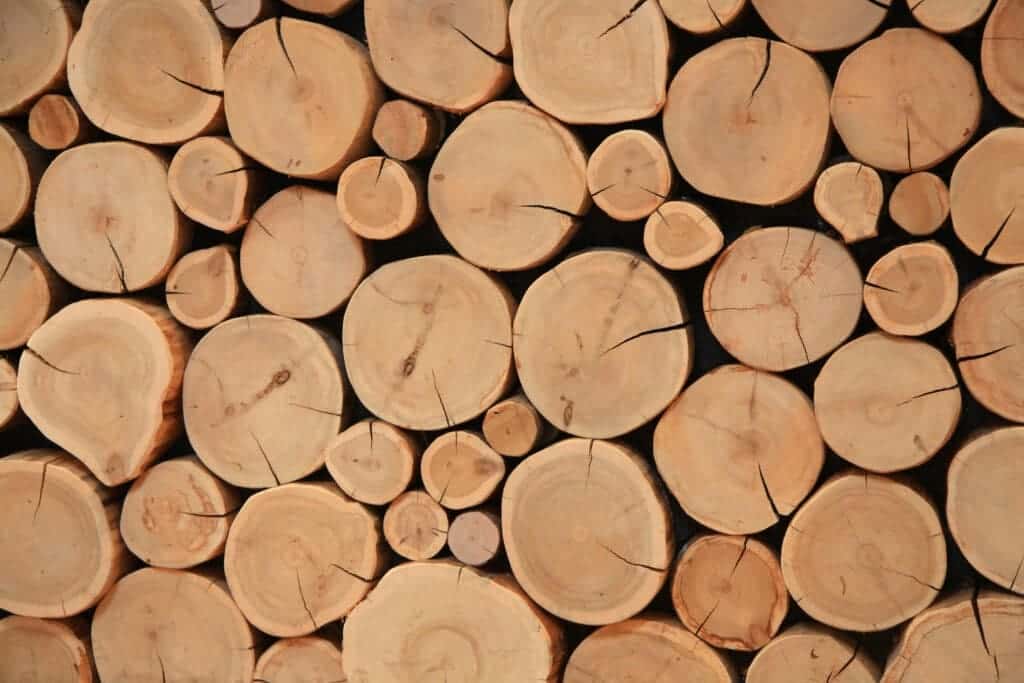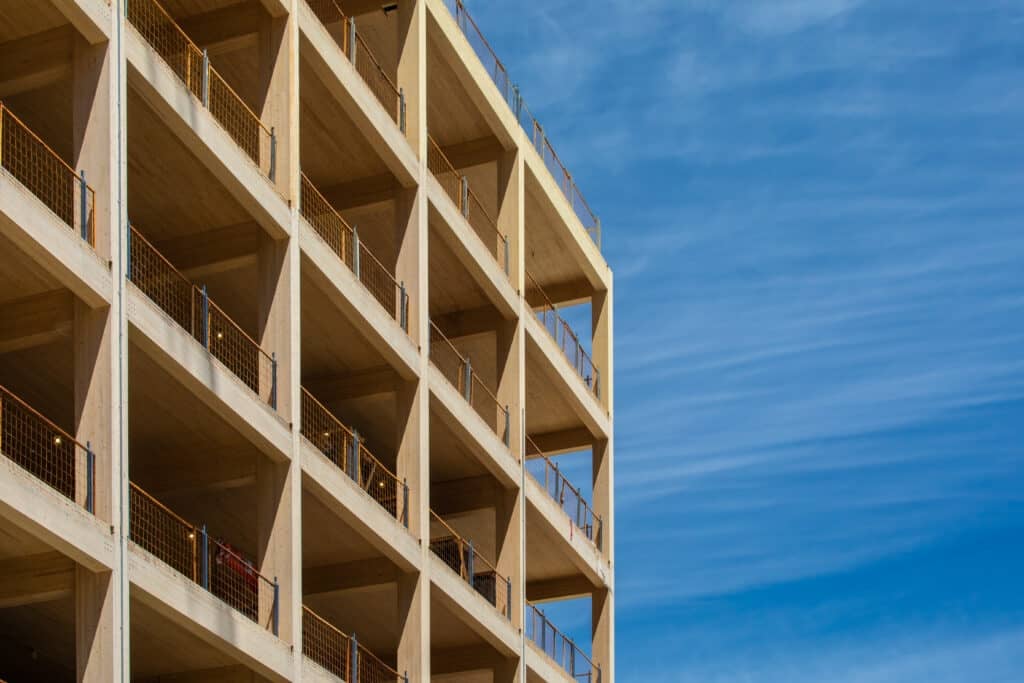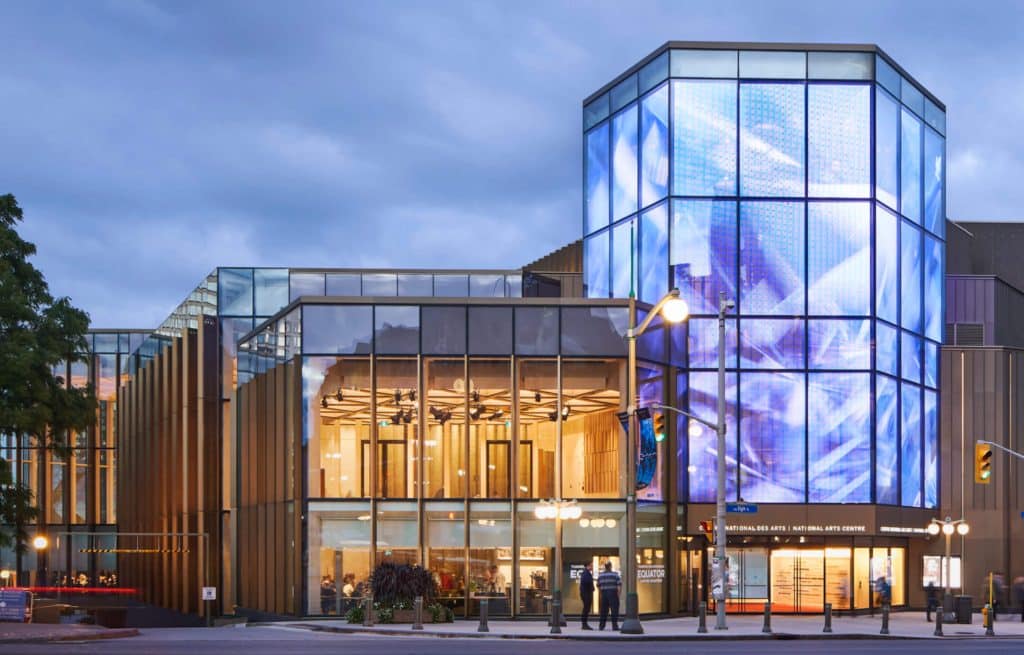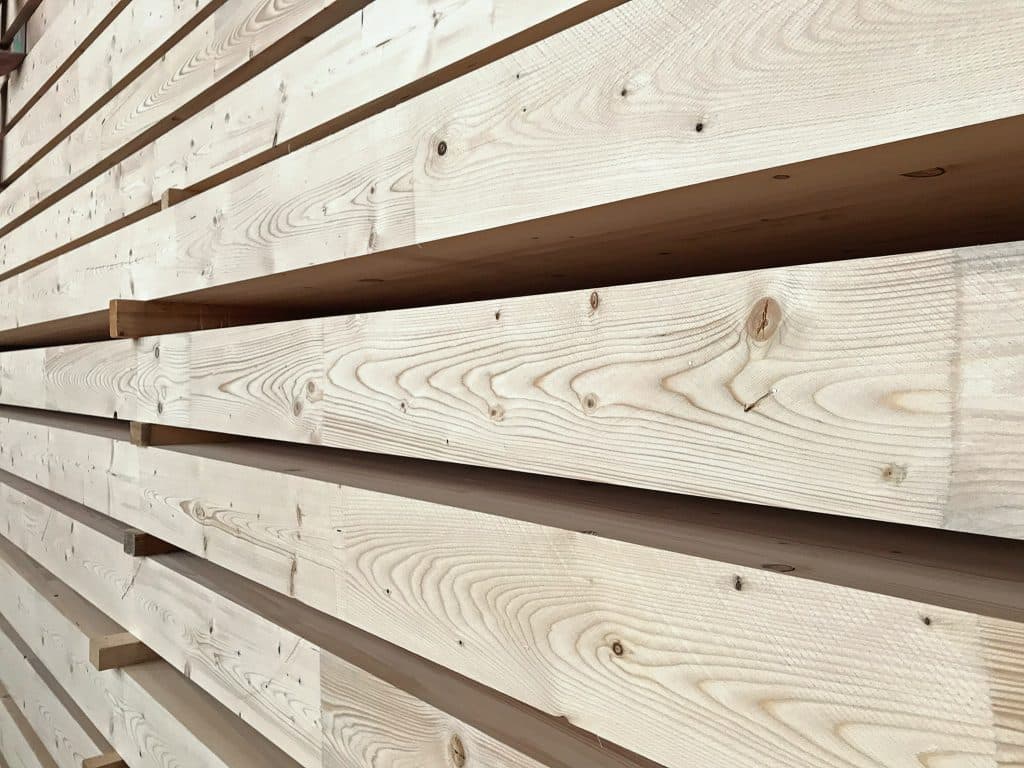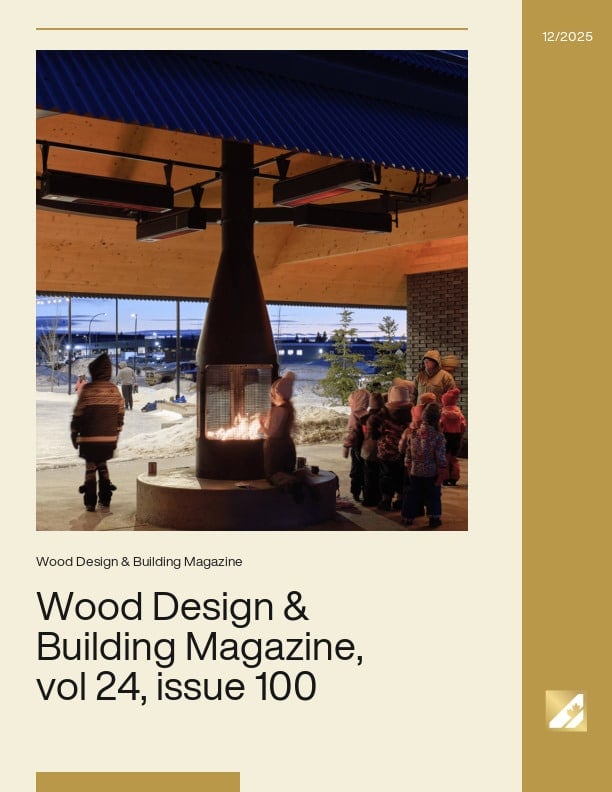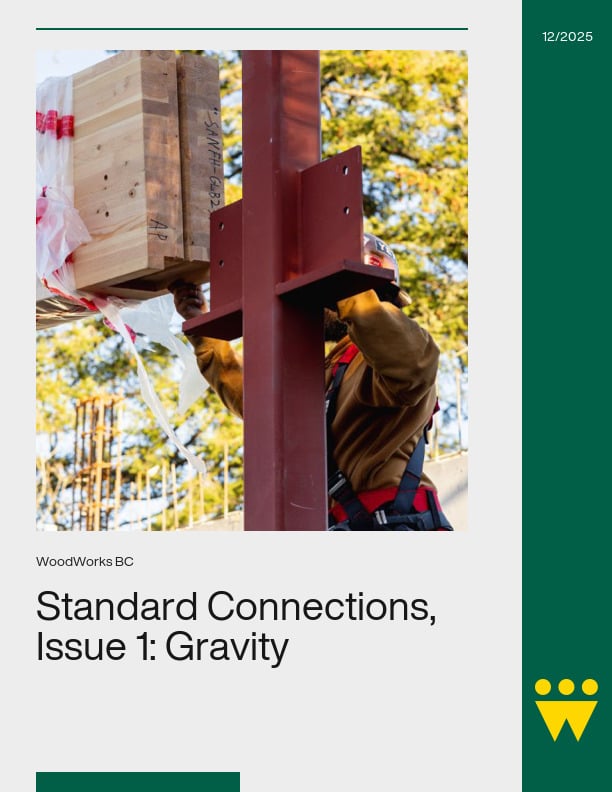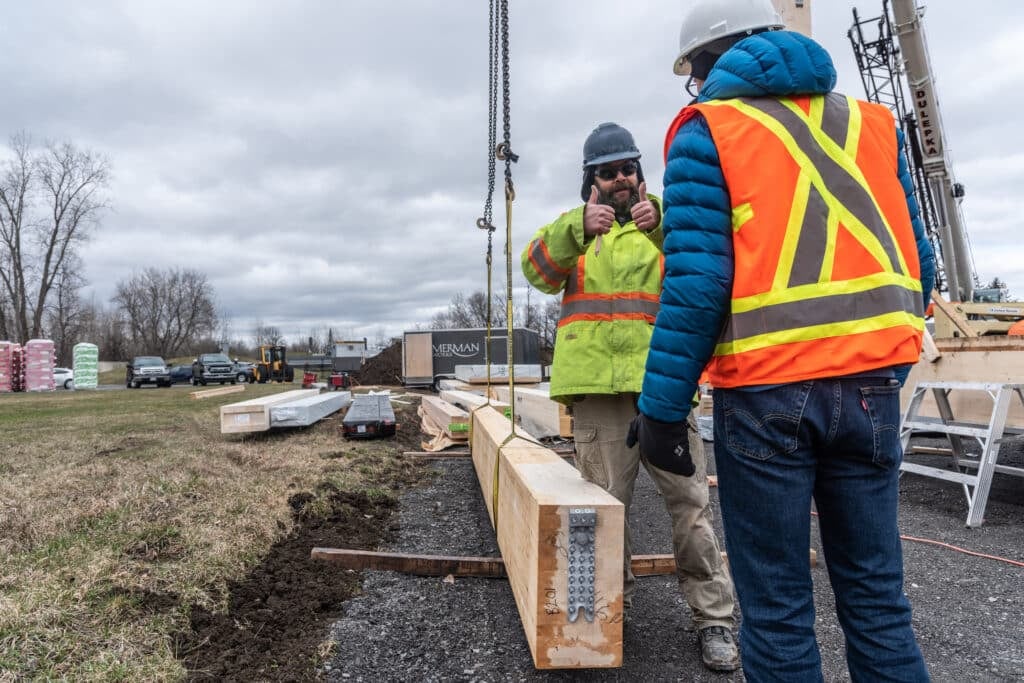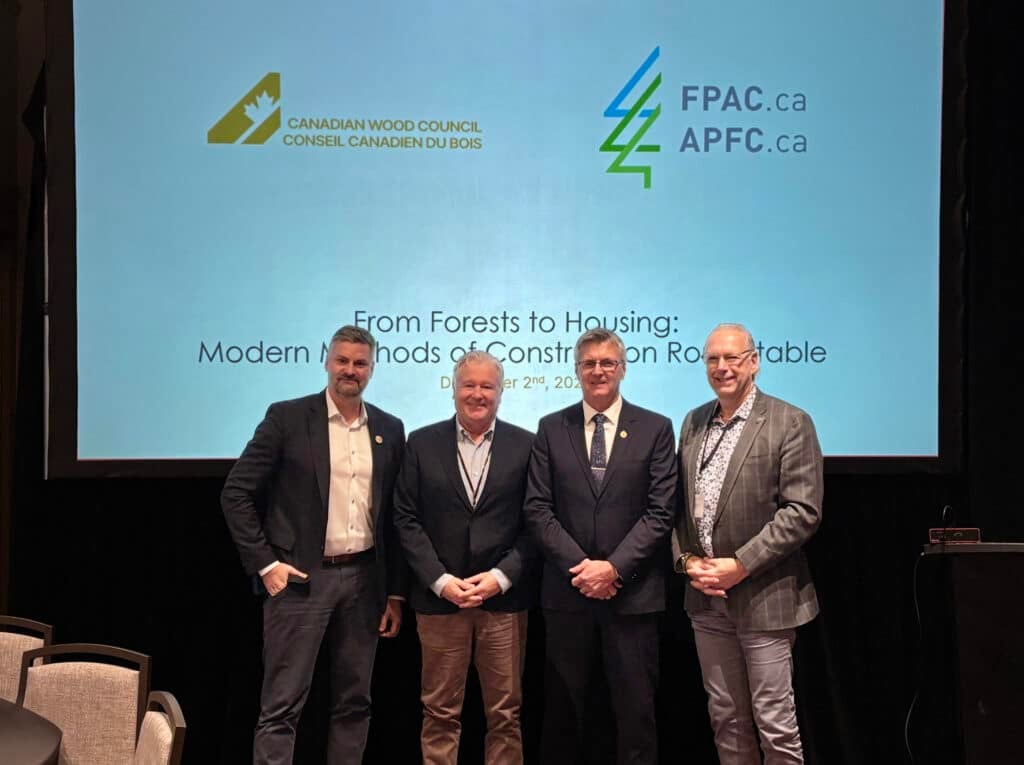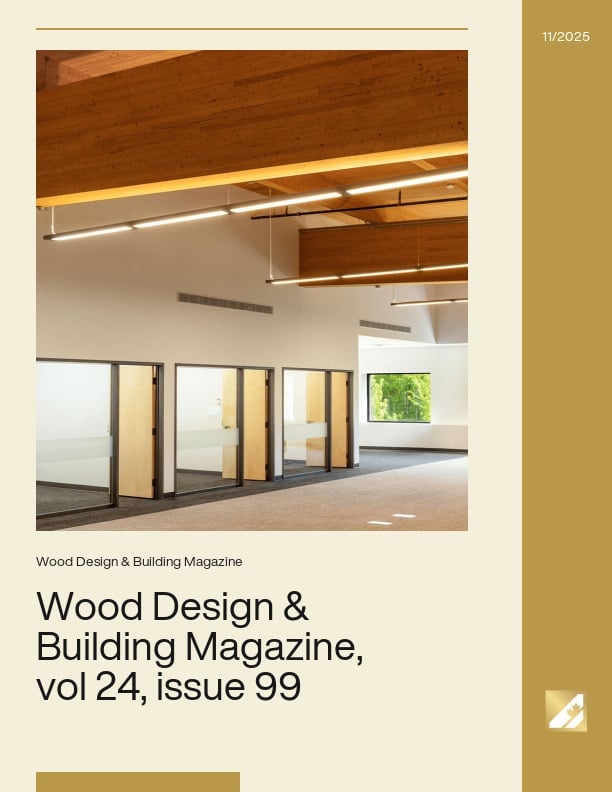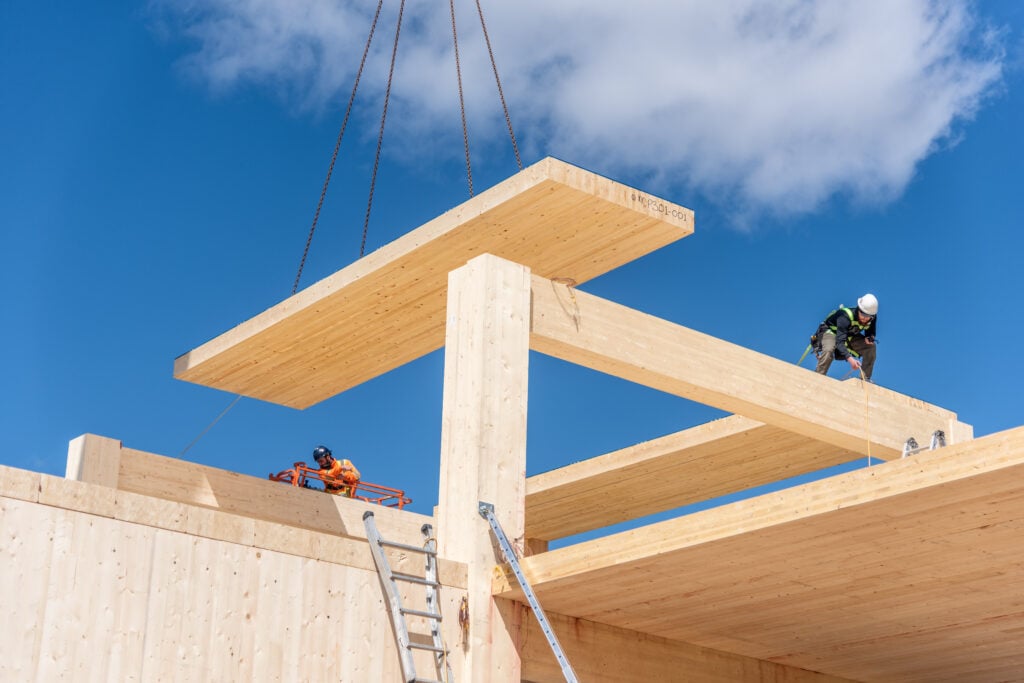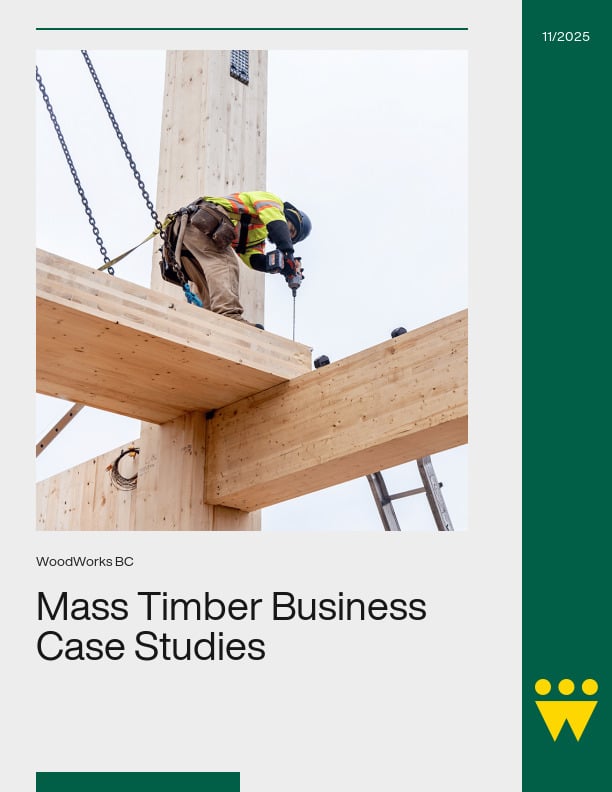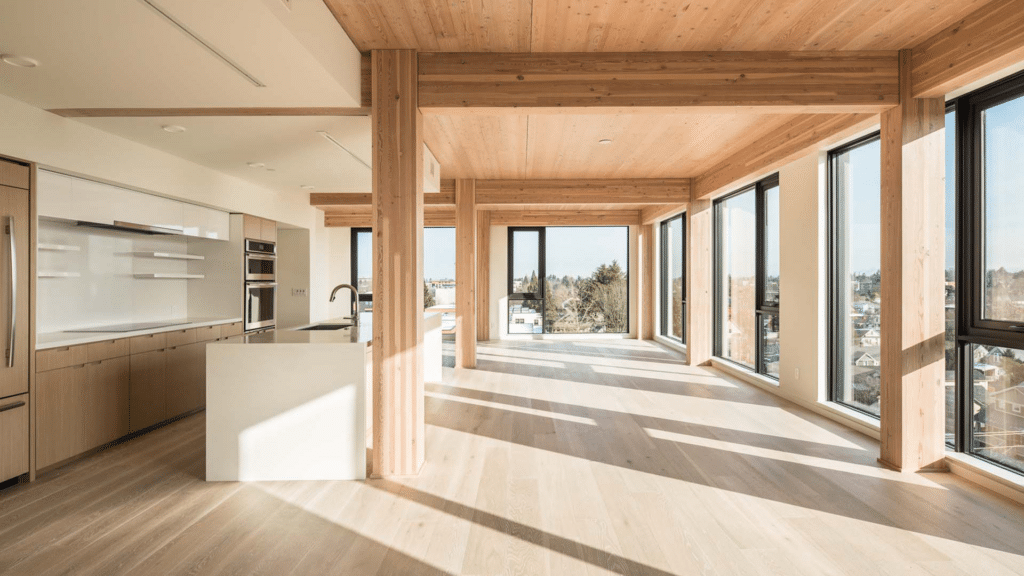Welcome to the Canadian Wood Council
Technical & Educational
Resource Hub for Wood Construction
Explore the benefits of building with wood through expert resources, sustainable practices, and innovative solutions for modern construction
Popular Topics
Learn why wood is the go-to material for sustainable, strong, and efficient building solutions.
Find the latest building codes and standards to ensure your projects meet regulations.
Explore the wide range of wood products and their applications in modern construction.
Discover innovative building systems designed for strength, efficiency, and sustainability.
Stay updated on the latest trends, innovations, and stories in the wood construction industry.
Learn about fire-resistant wood solutions to enhance safety and meet building requirement.
Understand how insurance applies to wood projects and mitigate potential risks effectively
Featured Articles Selected for You
Curated articles to help you stay informed about the latest trends, techniques, and innovations in wood construction and design. Explore our resources handpicked for your needs.
- Wood Design & Building Awards Winning Projects Announced
Toronto, ON – The Canadian Wood Council is pleased to announce the winning projects of the 40th annual Wood Design & Building Awards program. This prestigious awards program recognizes and celebrates the outstanding work of architectural professionals from around the world who achieve excellence in wood design and construction.
“We’re proud to recognize leading innovators in wood design through our awards program,” says Martin Richard, Vice President of Communications and Market Development at the Canadian Wood Council. “This year’s submissions were remarkable in their scope, quality, and variety. They reflect a rising interest in biomaterials and highlight the importance of wood as a versatile, low-carbon, high-performance material, driving the next generation of sustainable buildings.”
The jurors for the Wood Design & Building Awards were:
- Marlon Blackwell, Principal at Marlon Blackwell Architects
- Veronica Madonna, Director and Principal at Studio VMA
- Alfred Waugh, Principal at Formline Architecture + Urbanism
A total of 19 winning projects from a diverse group of creators were selected from the impressive field of entries.
New this year, the regional WoodWorks program awards from Ontario, British Columbia, and Alberta were integrated with the Wood Design & Building Awards.
The jurors for the WoodWorks awards were:
- Duncan Bourke, Vice President of Development at Cityflats
- Melissa Higgs, Principal at hcma
- Steve Oosterhof, Partner and Structural Engineer at Dialog
Fifteen winning projects were selected, with five from each regional program. The creativity and talent of these winning teams, as well as the beauty and diversity of their wood projects, are transforming the built environment.
In total, 33 award winners from around the globe were celebrated for excellence in wood design at the Wood Design and Building Awards celebration hosted at the WoodWorks Summit on October 22, 2024.
COMPLETE LIST OF AWARD-WINNING PROJECTS FOLLOWS:
Honor
- Arbour House (Victoria, BC) | Patkau Architects
- Hilltop Cottage (NB) | MacKay-Lyons Sweetapple Architects Ltd.
- Mohegan Trail (Block Island, RI, USA) | Bates Masi + Architects
- The Nest (Bayfield County, WI, USA) | SALA Architects, Inc.
- Prepared Rehmannia Root Crafts Exhibition Hall (Houyanmen Village, , Henan Province, China | Luo Studio
- Wisdome Stockholm (Stockholm, Sweden) | Elding Oscarson Architects
Merit
- Covered ice rink in Saint-Apollinaire (Saint-Apollinaire, QC) | ABCP architecture et urbanisme
- Cheko’nien House (Victoria, BC) | Perkins&Will
- House In A Garden (Coconut Grove, , FL, USA) | Atelier Mey Architects
- Quantum Institute (Sherbrooke, QC) | Saucier + Perrotte
Citation
- Cunard Street Live / Work / Grow (Halifax, NS) | FBM
- Des Cerisiers Elementary School (Maskinongé, QC) | Lucie Paquet architecte, Paulette Taillefer architecte, Leclerc architectes
- LP Hotel with a View (Lodeynoe Pole, Russian Federation) | RHIZOME
Sansin Sponsored Awards
- Galien River Retreat (New Buffalo, MI, USA) | Wheeler Kearns Architects
- Arbour House (Victoria, BC) | Patkau Architects
Sustainable Forestry Initiative Sponsored Award
- 619 Ponce (Atlanta, GA) | Handel Architects
Western Red Cedar Sponsored Award
- Bunkie on the Hill (Muskoka, ON | Dubbeldam Architecture + Design
Wood Preservation Sponsored Award
- #Ferndale_Flightdeck (Ottawa, ON) | 25:8 Architecture + Urban Design
WoodWorks Ontario Category
- Bunkie on the Hill (Muskoka, ON | Dubbeldam Architecture + Design
- Centennial College A-Building Expansion (Toronto, ON) | DIALOG in collaboration with Smoke Architecture
- New Tecumseth Municipal Offices Adaptive Re-Use (Alliston, ON) | +VG Architects
- Queen’s University Indigenous Gathering Space (Kingston, ON) | Smoke Architecture
- Science Collaboration Centre at Chalk River (Chalk River, ON) | HDR
WoodWorks BC Category
- Arbour House (Victoria, BC) | Patkau Architects
- Nuxalk Mask, song and dance (Bella Coola, BC) | Mackin Architects Ltd.
- Pyrrha (Vancouver, BC) | Birmingham & Wood Architects Planners LLP
- Rosemary Brown Recreation Centre (Burnaby, BC) | hcma architecture + design
- təməsew̓txʷ Aquatic and Community Centre (New Westminster, BC) | hcma architecture + design
WoodWorks Alberta, Prairie Category
-
- Canopy (Edmonton, AB) | Jonathan Monfries
- Olds College, Werklund Agriculture and Technology Centre (Olds, AB) | GGA-Architecture
- Saddle Lake Onchaminahos Elementary School (Saddle Lake Cree Nation, AB) | Reimagine Architects
- The Station at Cochrane Crossing (Cochrane, AB) | GEC Architecture
- V Residence (Winnipeg, MB) | 1×1 architecture inc.
Watch our Awards Videos
- Engineering, Industry News, Mass Timber, News, Safety
June 13, 2024 (Ottawa)– Earlier today, The Transition Accelerator unveiled The Mass Timber Roadmap at the Press Conference Room in the West Block on Parliament Hill. The comprehensive report outlines an ambitious and strategic vision for the future of mass timber in Canada and its potential to transform green construction and drive economic growth across the country.
Developed in partnership with Canadian Wood Council (CWC), Forest Products Association of Canada (FPAC), and Energy Futures Lab (EFL), The Mass Timber Roadmap comes after more than a decade of collaborative efforts to unlock and demonstrate potential of mass timber and lays out a visionary plan to increase the mass timber market – both domestic and exports – to $1.2 billion by 2030 and to $2.4 billion by 2035.
This ambitious growth aligns with increasing market demand in North America and around the world. By leveraging the power of mass timber solutions, Canada has a unique opportunity to enable the construction of residential and commercial structures at greater speeds, with lower costs, and with a lighter carbon footprint; all while capturing a share of the rapidly growing global market.
Achieving targets laid out in The Mass Timber Roadmap requires coordinated efforts across three critical action areas and the report provides actionable next steps, including:
- Public-Private Collaboration: The Mass Timber Roadmap calls for a partnership between public and private sectors to develop and advance a comprehensive policy package that will enhance the value of Canada’s forest resources while building domestic capacity along the supply chain.
- Standardization: There is a need to standardize building archetypes, wood specifications, and connectors throughout the supply chain to streamline processes and reduce costs.
- Skills Development: Implementing a robust skills development plan that encompasses all aspects of the supply chain is essential to support the sector’s growth.
Today’s event on Parliament Hill featured the following speakers who highlighted the roadmap’s goals and the promising future for mass timber in Canada, followed by an engaging Q&A session with journalists:
- Derek Eaton, Director of Future Economy, The Transition Accelerator
- Derek Nighbor, President and CEO, Forest Products Association of Canada (FPAC)
- Kate Lindsay, Senior Vice President and Chief Sustainability Officer, Forest Products Association of Canada (FPAC)
- Rick Jeffery, President and CEO, Canadian Wood Council (CWC)
Key Quotes:
“The mass timber sector provides a perfect example of how Canada can add value to its primary resources through innovative technologies and advanced skills. If we act strategically and quickly, we have the opportunity to build an industry that reduces emissions, addresses urgent needs, and positions Canada to win in emerging global value chains.” – Derek Eaton, The Transition Accelerator
“To build a world-class mass timber sector, Canada must adopt a strategic approach to ensure we can compete and win globally. This is about smart policy here at home and bringing more Canadian wood to our cities and to the world. By enabling faster, cost-effective, and environmentally-friendly construction with mass timber we can grow jobs, help address the affordable housing crunch, and reduce emissions.” – Kate Lindsay, Forest Products Association of Canada (FPAC)
“The potential for Canadian wood products to reduce the carbon footprint of the built environment and drive the growth of a sustainable and prosperous wood industry is immense; however, global competition to capitalize on the significant economic opportunities mass timber presents in the transition to a lower-carbon world will require us to act swiftly to stay competitive and meet rapidly emerging domestic demand.” – Rick Jeffery, Canadian Wood Council (CWC)
- Insurance
Ottawa, Ontario – September 17, 2024 — The Canadian Wood Council (CWC) and Woodsure (A division of Axis Insurance Managers Inc.) are pleased to announce a new partnership between their WoodWorks and Woodsure programs respectively. This strategic collaboration is expected to help support the increased adoption of wood construction in Canada.
The positive influences of design innovation, advanced materials, new building codes, and the evolving priorities of society are driving change in the construction sector; in particular, these influences are driving the expanded use of advanced wood construction.
However, as with the adoption of any new technology, perceived unknowns can create barriers that need to be to overcome. One such barrier is access to insurance for this new class of technologically advanced wood buildings.
This partnership aims to empower architects, builders, and developers to choose wood with confidence, knowing they have access to robust insurance solutions that understand the complexities of wood construction. Together, we can significantly enhance the acceptance, safety, and growth of mass timber construction, recognizing it as a strategically preferred material for sustainable building practices.
Statements from Key Stakeholders
Rick Jeffery, President & CEO, Canadian Wood Council:
“We are thrilled to welcome Woodsure as a partner of our WoodWorks program. This collaboration is a natural extension of our mutual commitment to supporting wood construction, fostering growth of the wood construction sector, and encouraging increased adoption of sustainable building practices. By combining our efforts, we are confident that this partnership will have a positive impact on the industry.”
Roland Waldmeier, National Senior Vice President, Construction, Contracting, and Real Estate, Axis Insurance Managers Inc.
“We believe that insurance should not only keep pace with, but also actively support, the mass timber and wood frame industries. These sectors are vital to both social and economic objectives in Canada. Therefore, it is important for us to continually develop innovative insurance solutions that foster growth in the Canadian wood industry. By providing the necessary capacity, we make it easier for projects to secure the coverage they need.”
Connie Rowley, Senior Vice President, Woodsure:
“Supporting the mass timber industry with specialized insurance products is crucial for accelerating the adoption of wood construction. By offering tailored insurance solutions, insurers can provide the necessary capacity and confidence for developers to invest in mass timber projects. This support not only mitigates financial risks, but also fosters innovation and sustainability in construction. Enhanced insurance products can address concerns related to fire safety, structural integrity, and long term reliability, thereby reassuring stakeholders and encouraging broader acceptance of this eco-friendly building material. Consequently, this leads to a more sustainable construction industry and helps in reducing the carbon footprint.”
- scholarship
Ottawa, ON, December 12, 2024 – The Canadian Wood Council (CWC) announced the recipients of the 2024 Catherine Lalonde Memorial Scholarships: Laura Walters (McMaster University) and Jiawen Shen (University of British Columbia). Both students were recognized for their academic excellence and impactful research projects in the structural wood products industry.
Established nineteen years ago, the memorial scholarships are awarded each year to graduate students whose wood research exemplifies the same level of passion for wood and the wood products industry that Catherine Lalonde tirelessly demonstrated as a professional engineer and president of the CWC.
Laura Walters
Laura is a 3rd-year graduate student pursuing a Master of Applied Science in Civil Engineering under a joint collaboration between McMaster University and the University of Northern British Columbia (UNBC). Her research project explores the use of pre-engineered beam hangers in mass timber post-and-beam systems, with a focus on the implications of design and modelling assumptions on the evaluation of structural load paths. Her work provides valuable insights into the design considerations and assumptions required for more accurate and reliable design of mass timber columns when pre-engineered beam hangers are used.
Jiawen Shen
Jiawen is a 1st year graduate student pursuing a Master in Wood Science at the University of British Columbia. Her research project focuses on the development of binderless composite bark-board cladding and insulation panels that are durable, ignition resistant, carbon neutral, and manufactured from an underutilized by-product that would otherwise be burned, landfilled, or used for low-value purposes. Collaborating with a Vancouver-based architecture firm on this project, her work is key to advancing the commercial application of these innovative cladding products.
“This year marks a historic milestone for the Catherine Lalonde Memorial Scholarship program as, for the first time, it is awarded to two exceptional women,” said Martin Richard, VP of Market Development and Communications at the CWC. “Their achievements highlight the outstanding talent driving innovation in wood research and construction. We are inspired by their contributions and the growing diversity shaping the future of wood-based solutions.”
December 19, 2024 (Ottawa) – The 2025 Ottawa Wood Solutions Conference will be presented on Wednesday, February 5, 2025, from 8:00 am to 5:00 pm, at the National Arts Centre, located at 1 Elgin St. in Ottawa.
First launched over 20 years ago to serve design and construction professionals interested in building with wood, this event has evolved from a niche gathering into a cornerstone of professional education, driven by the growing demand for sustainable wood construction. The program offers a range of presentations—from technical deep dives to inspiring case studies—catering to participants at every stage of their professional journey, from newcomers to seasoned experts. Attendees can also take advantage of valuable opportunities to connect, collaborate, and expand their professional networks within the wood community.
Conference organizers are delighted to welcome Christophe Ouhayoun of KOZ Architects (France) to share insights into the innovative, collaborative development of the Paris Olympics Athletes’ Village. His presentation will also explore the current effort underway to convert these structures into much-needed permanent housing, highlighting this progressive mass timber development as a model of adaptability and sustainability.
Another program highlight pays tribute to the venue itself. Donald Schmitt, CM, of Diamond Schmitt Architects will present on the revitalization of the National Arts Centre, offering a behind-the-scenes look at the timber structure and prefabrication process that transformed this iconic building into a modern landmark.
Other technical presentations include managing sound and vibration in mass timber buildings and growing Canadian capacity for industrialized wood construction, advancing wood products in our changing climate, and a discussion of the value of conventional wood frame construction in small communities where it provides job opportunities, with a specific focus on Indigenous housing projects.
Early Bird registration of just $99+HST is available until the end of December. In the new year, registration for the conference will be $149 +HST. Delegates can find the Ottawa Wood Solutions Conference on Eventbrite or jump directly to online registration with this link: https://www.eventbrite.ca/e/2025-ottawa-wood-solutions-conference-tickets-1080654991169
A limited number of discounted passes are available for post-secondary educators and students in AEC+D programs of study. Please contact Kelsey Dayler for more information kdayler@cwc.ca.
- federal governemnt, Mass Timber
OTTAWA, ON, 21 MAR 2025 – The Canadian Wood Council (CWC) applauds the Government of Canada’s strategic investment in Nova Scotia’s mass timber sector, recognizing its role in advancing low-carbon construction, economic growth, and job creation.
This funding will accelerate the fabrication of high-value mass timber components from undervalued eastern spruce, unlocking new opportunities for Canada’s forest sector and expanding the use of advanced wood materials in construction. By supporting the production of Cross-Laminated Timber (CLT) and Glulam in Nova Scotia, this investment strengthens supply chains, creates skilled jobs in the region, and enhances the competitiveness of low-carbon building solutions across Canada.
Mass timber is increasingly recognized as a proven strategy for the rapid construction of much-needed housing and other critical infrastructure. Its benefits extend across multi-residential and commercial buildings, offering a scalable, efficient, and sustainable approach to modern construction.
Canada’s forest sector is well-positioned to meet the growing domestic demand for sustainable construction materials. This investment will drive innovation in mass timber manufacturing, creating economic opportunities in Nova Scotia while enhancing Canada’s capacity to produce and supply mass timber products nationwide. Expanding domestic production advances low-carbon building solutions and strengthens Canada’s wood manufacturing sector.
The CWC applauds this commitment to fostering a resilient and competitive mass timber industry in Atlantic Canada. Through our WoodWorks technical program, we look forward to supporting construction professionals with the knowledge and resources they need to integrate mass timber into more projects across the country.
View the announcement from Natural Resources Canada here: https://www.canada.ca/en/natural-resources-canada/news/2025/03/canada-invests-in-nova-scotias-local-mass-timber-industry.html
eLearning Centre
Grow & Learn With Us!
Join us to expand your expertise in wood design and construction. Access interactive courses that empower you to excel in your projects and achieve your goals.

Get First and 5-Star Access to our Resources!
Stay in the loop and don’t miss a thing!
Our Best Resources, Just for You
Access an extensive library of tools, guides, and insights designed to support your wood construction and design projects. Start exploring today and unlock your full potential..
Reaching one hundred issues is a milestone worthy of both celebration and reflection. Wood Design & Building, once upon a time called Wood le Bois, began as a modest trade magazine dedicated to showcasing excellence in wood architecture. Over the years we added special features and technical content that helped us grow a loyal readership and community of wood design advocates.
Recently, our cherished print magazine evolved into a digital, multi-media publication. While this transformation involved a small sense of loss for the printed ways of our past, we remain excited by the expanded potential the new format affords, with a reach far wider than we ever imagined at the outset of this journey. So, while the format may have changed, and content options expanded, our purpose has remained remarkably steady. Issue after issue, we have tried to capture not just great buildings, but the innovations, insights, and architectural aspirations that continue to expand wood’s role in contemporary design and construction.
As we look back, there is a sense of gratitude for all that has unfolded across these pages. Past editions captured early explorations in modern timber construction, the resurgence of adaptive reuse, and the steady shift toward high-performance, low-carbon buildings. Today, advances in mass timber systems, hybrid approaches, and industrialized processes are reshaping how buildings come together. Throughout this evolution, wood has been at the center of conversations about sustainability, long-term value, and design expression. The body of work published over the years reflects not only changing technologies but the steady influence of a material with deep cultural and environmental roots.
It is fitting that our 100th issue is also our special awards edition, honouring the winners of the 2025 Wood Design & Building Awards. These celebrated projects are the latest chapter in the architectural story we have been privileged to document for decades. What distinguishes them is not only their accomplishment today, but what they suggest about tomorrow: a more sustainable built environment defined by technical excellence, architectural warmth, and memorable experiences that transcend program or scale.
To everyone who has contributed, read, shared, and championed this publication—thank you. Reaching 100 issues is deeply meaningful, not because of the number alone, but because it represents a sustained conversation within a community that cares about design, innovation, and the future of building. We remain committed to documenting that evolution, and we look forward to continuing the conversation with you, discovering new stories, and celebrating the work yet to come.
Connection design variability is often considered to be a significant cost driver for mass timber projects, yet designers often lack clear guidance on what standard solutions could look like. The purpose of this document is to provide the construction industry with standardized detailing practices that cover a wide range of connections commonly found in mass timber buildings in Canada. These details can be adapted across multiple projects with various design teams and suppliers. The focus is on providing high-capacity, simple installation, and overall cost-effectiveness for timber connections.
Six details are presented based on typical beam, column, and wall connections. This document also outlines the design focus areas that were prioritized during detail development. Lastly, a checklist is provided for detailers to ensure that all priorities are considered. Companion 3D versions of these details can downloaded here.
Ottawa, ON, December 16, 2025 – The Canadian Wood Council (CWC) is pleased to announce three recipients of the 2025 Catherine Lalonde Memorial Scholarship: Houman Ganjali (University of Northern British Columbia), Kalkidan Tesfaye Shewandagn (McGill University), and Henri Monette (University of Toronto). These exceptional graduate students were selected for their academic excellence and their cutting-edge research advancing innovation in structural wood products and wood-based construction systems.
Established twenty years ago, the memorial scholarships honour the legacy of Catherine Lalonde, whose leadership as a professional engineer and president of the CWC helped shape the trajectory of wood design and construction in Canada. Each year, the awards recognize graduate students whose research reflects the same commitment to scientific excellence, industry impact, and passion for wood that Catherine championed throughout her career.
This year, the Canadian Wood Council received 51 submissions, a record for the program. The submissions reflected a high level of academic discipline and a strong orientation toward industry-relevant challenges, an indication of both the vitality of the research community and the growing importance of wood-based solutions in the built environment.

Houman Ganjali
Houman is a 5th year PhD candidate in Engineering at the University of Northern British Columbia. His research investigates the structural performance of point-supported cross-laminated timber (CLT) floors, focusing on the rolling-shear strength of CLT panels and the punching-shear capacity of point-supported systems. His work also examines improved connection strategies along the minor strength axis, reinforcement approaches for point supports, and the creep and vibration behaviour of point-supported floors. Houman’s research culminated in the development of a design proposal for the resistance of point-supported CLT floors, which will be presented to the CSA O86 Technical Committee for potential inclusion in future editions of the standard.

Kalkidan Tesfaye Shewandagn
Kalkidan is a 2nd year PhD student in Civil Engineering at McGill University. Her research focuses on the seismic design and performance assessment of wood-frame buildings constructed over podium structures. By integrating experimental testing, nonlinear modelling (OpenSeesPy), and performance-based assessment, her work quantifies the interaction between wood-frame systems and podiums. The resulting guidelines aim to support broader adoption of wood in multi-storey and hybrid buildings across Canada.

Henri Monette
Henri is a 4th year PhD candidate in Civil and Mineral Engineering at the University of Toronto. His research explores the development of a high-resistance connector for mass timber structures—an innovative system designed to optimize fibre use by mobilizing the full sectional resistance of connected timber members. By addressing the strength and resilience limitations of current connection technologies, Henri’s work supports mass timber’s ability to compete with and displace traditional materials such as steel and concrete.
“The large number of submissions we received this year signals the impressive depth of wood-focused research underway across Canada,” said Blériot Feujofack, Manager of Wood Education at the Canadian Wood Council. “This year’s scholarship recipients stand as strong examples of the academic excellence demonstrated throughout the applicant pool, distinguished by their clear methodological strength and practical relevance. Their findings hold meaningful value for practitioners, code developers, and industry partners, and will contribute to the continued advancement of wood construction in Canada.”
About the Canadian Wood Council
The Canadian Wood Council (CWC) is Canada’s unifying voice for the wood products industry. As a national federation of associations, its members represent hundreds of manufacturers across the country. CWC supports its members by accelerating market demand for wood products and championing responsible leadership through excellence in codes, standards, and regulations. CWC also delivers technical support and knowledge transfer for the construction sector through its market leading WoodWorks program.
Toronto, ON – December 15, 2025 – The Canadian Wood Council (CWC) welcomes the announcement made today by the Honourable Tim Hodgson, Minister of Energy and Natural Resources, at the Toronto and Region Conservation Authority. The event celebrated funding for projects that strengthen Canada’s forestry sector and foster innovation in wood-based solutions.
CWC received $8.5 million since 2023 to expand the use of wood-based products, broaden education on wood construction and contribute to the advancement of the National Building Code.
The Canadian Wood Council deeply values the Government of Canada’s continued leadership in advancing innovative, low-carbon construction through the GCWood Program. This funding has allowed CWC and its WoodWorks program to support design and construction professionals with expert resources, tools, and guidance that help accelerate the adoption of wood construction nationwide. As we continue this work, we will help catalyze sustainable demand for construction solutions that are not only innovative but also replicable and rapidly deployed, approaches that will help address Canada’s housing and affordability challenges at scale.
CWC and WoodWorks provide:
- project based technical assistance to architects, engineers, developers, and builders on wood design and construction;
- education and training through specialized programs, conferences, webinars, and resources developed for post-secondary students, tradespeople, and construction professionals to support advanced wood construction technologies including mass timber and engineered wood products;
- expert network development opportunities for industry professionals to connect and share best practices; and
- sector engagement in national code development to facilitate greater understanding and adoption of advanced, performance-based wood construction.
“GCWood support enables us to provide critical technical advisory services, deliver wood-focused education and training to existing and future practitioners, and contribute to code developments that reflect the evolving strengths of modern wood products and systems. GCWood investments are important, strategic inputs that strengthen Canada’s forestry, manufacturing, and construction sectors. We look forward to building on our work to date as we engage with partners nationwide to accelerate the adoption of sustainable wood solutions and modern methods of construction.” – Rick Jeffrey, President and CEO, Canadian Wood Council.
The Canadian Wood Council looks forward to collaborating with partners and stakeholders as these projects move forward, supporting Canada’s leadership in sustainable construction and forestry.
Background
- The Canadian Wood Council received $4,999,536 to increase the use of wood-based solutions, systems, and products in Canada by building proficiency in the use of wood as a construction material through direct technical support, training, awareness, and networking.
- The Canadian Wood Council received $2,942,610 for a second project to increase the number of educational offerings and content related to wood construction education in order to increase the understanding and acceptance of wood as a building material by post-secondary students, trades and other construction industry professionals.
- The Canadian Wood Council received $594,000 for a third project to enable the forest industry’s participation over the next three years for code change proposals allowing for the increased use of low-carbon building materials and mass timber in wood buildings for the 2025 and 2030 editions of the National Building Code and to accelerate the adoption of performance-based building codes.
About the Canadian Wood Council
The Canadian Wood Council (CWC) is Canada’s unifying voice for the wood products industry. As a national federation of associations, CWC members represent hundreds of manufacturers across the country. CWC’s mission is to support its members by accelerating market demand for wood products and championing responsible leadership through excellence in codes, standards, and regulations. CWC also delivers technical support and knowledge transfer for the construction sector through its market leading WoodWorks program.
About the National WoodWorks Program
The Canadian Wood Council’s WoodWorks Program a national outreach initiative dedicated to advancing the use of wood in construction by providing educational opportunities and direct technical support. The program helps architects, engineers, developers and other industry professionals expand their capacity for wood design and construction, contributing to a more sustainable built environment.
Toronto, ON – December 3, 2025 – The Canadian Wood Council (CWC) welcomes the Ontario government’s launch of the Advanced Wood Construction Working Group, a strategic team that will guide the implementation of Ontario’s Advanced Wood Construction Action Plan.
The Working Group brings together leaders from across the manufacturing and construction sectors to identify practical ways to expand the use of Ontario-made wood products in homes, businesses, and communities across the province.
“Ontario continues to show leadership in advancing innovative, low-carbon building solutions,” said Rick Jeffery, President and CEO of the Canadian Wood Council. “CWC looks forward to contributing technical expertise and national insight to help deliver on the Action Plan’s goals and grow advanced wood construction in Ontario.”
As part of the Working Group, CWC will collaborate with government and industry partners to accelerate adoption of mass timber and prefabricated wood systems, support code modernization and training, and promote greater use of Ontario’s sustainable wood products in construction.
“Building with wood offers a highly efficient solution for addressing Ontario’s housing needs while supporting the growth of local value-added manufacturing. More industrialized wood construction means more opportunities for skilled workers and their communities. I am proud to support Ontario’s leading role in the evolving construction sector, contributing to a more resilient, efficient, and forward-looking building environment.” Steven Street, Executive Director, WoodWorks Ontario, Canadian Wood Council.
This initiative marks an important step forward in implementing Ontario’s Action Plan and driving investment, innovation, and housing solutions through advanced wood construction.
About the Canadian Wood Council
The Canadian Wood Council (CWC) is Canada’s unifying voice for the wood products industry. As a national federation of associations, our members represent hundreds of manufacturers across the country. Our mission is to support our members by accelerating market demand for wood products and championing responsible leadership through excellence in codes, standards, and regulations. We also deliver technical support and knowledge transfer for the construction sector through our market leading WoodWorks program.
As the design and construction industry collectively strives towards a more sustainable built environment, one of the more interesting challenges in architecture today is how to work with what already exists. When existing structures are adapted and repurposed rather than demolished once they outlive their original use, resources are conserved, greenhouse gas emissions are lowered, heritage is preserved, and decarbonization goals are advanced.
Whether it’s adapting a historic structure to a new use or extending the life of a contemporary one with a creative renovation or addition, designers are exploring the possibilities and finding ways to integrate wood into projects that build on the foundations of the past, figuratively and literally, to meet the needs of the present.
In this issue, two feature stories explore different approaches to giving existing buildings new, expanded purpose. One project breathes new life into a traditional fieldstone barn through adaptive reuse, while another demonstrates how a lightweight mass timber vertical addition can expand an existing apartment building, adding new units to help meet growing housing needs. Both illustrate how wood enables design solutions that are respectful, efficient, and forward-looking.
Projects like these remind us that innovation is a form of evolution, and sometimes, the most sustainable, creative, and community-minded choice is to work with what you’ve already got.
This document presents a series of business case studies that explore the financial performance of mass timber projects, providing quantitative data and qualitative insights to help developers and investors assess its economic viability.
Each case study measures investment success, challenges, and lessons learned from the developer’s and project team’s perspectives. Moreover, by analyzing strategy, risk, revenue, cost and schedule, these case studies enable direct comparisons between mass timber and traditional construction methods.
WoodWorks is seeking developers and owners with completed mass timber projects to share data for analysis, supporting education and training in the mass timber sector. The goal is to continuously expand case studies across various sectors and markets. To participate or learn more, please contact a WoodWorks staff member.
Ottawa, Ontario – October 16, 2025 — The Canadian Wood Council (CWC) is pleased to welcome Rothoblaas Canada as a new national partner of its WoodWorks program. This collaboration aligns two organizations committed to advancing wood construction across Canada through education, technical support, and strategic market development.
As demand for high-performance, low-carbon buildings drives greater adoption of mass timber and other engineered wood systems, this partnership will strengthen the technical ecosystem supporting Canada’s construction industry. Leveraging Rothoblaas’s international leadership in structural connection technologies, envelope systems, and on-site safety solutions alongside WoodWorks’ national expertise in education, technical support, and market development, the collaboration will help advance best practices in timber design and construction. Together, the organizations will facilitate knowledge transfer and design innovation to support the integration of wood as a mainstream material in Canadian building projects.
“For more than 20 years, WoodWorks has been delivering technical expertise and support to the professionals advancing wood construction across Canada. Partnering with this respected network allows Rothoblaas Canada to share our global engineering experience and help drive innovation in connection systems, building envelope performance, and safe, efficient timber assembly,” says François-Laurent Chabot, General Manager & Region Sales Manager for Rothoblaas Canada.
“WoodWorks is proud to collaborate with Rothoblaas Canada to help build industry knowledge and acceptance of modern timber connection systems and other assembly solutions,” says Rick Jeffery, President and CEO of the Canadian Wood Council. “This partnership integrates Rothoblaas Canada’s expertise in engineered connectors and building envelope technologies with WoodWorks’ national platform for education and sector advancement—supporting a more seamless, performance-based approach to wood construction.”
Through shared outreach, resource development, and technical education across the country, this national partnership aims to equip architects, builders, and developers with the knowledge they need to confidently design and build with wood. Broader adoption of wood solutions can play a pivotal role in meeting national housing and infrastructure goals, while contributing to Canada’s climate objectives and the transition to a low-carbon economy.
About the Canadian Wood Council
The Canadian Wood Council (CWC) is Canada’s unifying voice for the wood products industry. As a national federation of associations, our members represent hundreds of manufacturers across the country. Our mission is to support our members by accelerating market demand for wood products and championing responsible leadership through excellence in codes, standards, and regulations. We also deliver technical support and knowledge transfer for the construction sector through our market leading WoodWorks program.
About the National WoodWorks Program
The Canadian Wood Council’s WoodWorks Program a national outreach initiative dedicated to advancing the use of wood in construction by providing educational opportunities and direct technical support. The program helps architects, engineers, developers and other industry professionals expand their capacity for wood design and construction, contributing to a more sustainable built environment.
About Rothoblaas Canada
Rothoblaas Canada is a leading provider of innovative solutions for mass timber and wood construction, offering a comprehensive range of structural fasteners, connection systems, membranes, and safety products. As part of the global Rothoblaas group, the Canadian division supports architects, engineers, and builders with technical expertise and code-compliant solutions tailored to local needs. Through research, education, and collaboration, Rothoblaas Canada advances high-performance, sustainable construction and helps drive the growth of Canada’s wood building industry.
Need Free Technical Support?
Get expert advice and solutions for your wood construction projects. Our team is here to help you succeed—reach out today.

